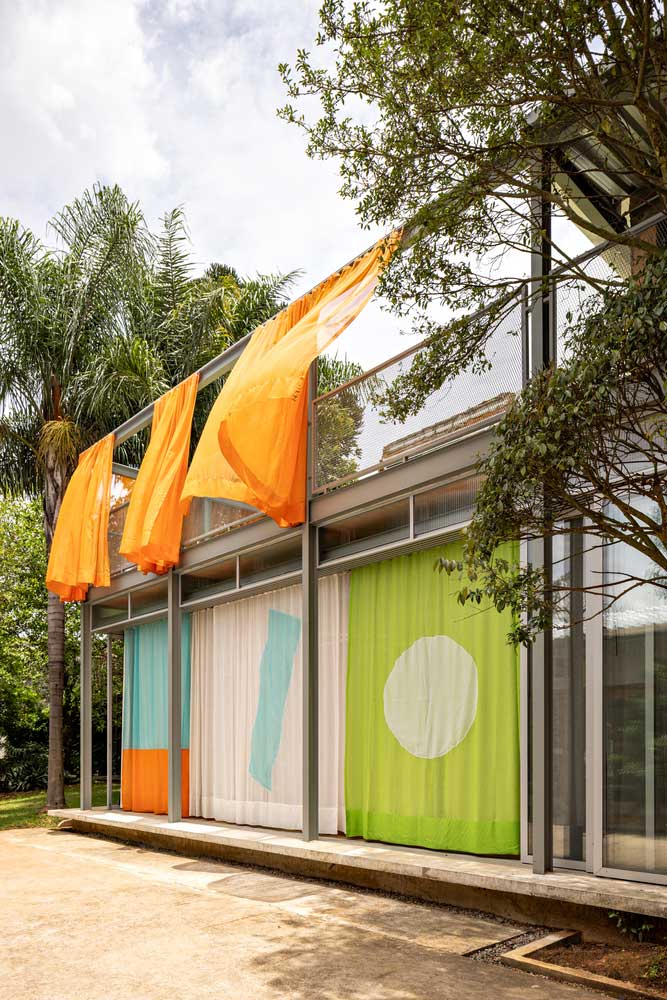In the heart of São Paulo, where the urban pulse meets the rhythm of nature, stands a testament to architectural evolution – the Liquid House. A harmonious blend of mid-century aesthetics with the boldness of metal, this structure narrates a tale of time, art, and innovation. Dive deep into the story of how metal met mid-century, and how the Liquid House became an emblem of modern artistic residency.






The Genesis of Liquid House
The inception of Liquid House was not just about bricks and mortar. It was a vision, a dream that sought to redefine the boundaries of architectural design. The house, with its roots in mid-century aesthetics, was a canvas waiting to be painted with modern strokes.
The city of São Paulo, with its vibrant culture and dynamic landscape, provided the perfect backdrop. The urban environment, teeming with life and art, became the muse for this architectural marvel. Every corner, every alley whispered tales of history, urging the creators to weave them into the fabric of the Liquid House.
The initial sketches and blueprints were more than just technical drawings. They were a reflection of passion, a roadmap to creating a space that would be both functional and artistic. The challenge was to marry the old with the new, to create a symphony of contrasts.
And as the foundation stones were laid, the dream began to take shape. The Liquid House was no longer just a concept; it was becoming a reality, a beacon of modern architecture in the heart of São Paulo.



Metal as the Modern Muse
Metal, with its sleek finish and robust character, was chosen to be the modern element to juxtapose against the mid-century design. It was not just about aesthetics; metal represented strength, resilience, and the future.
In the hands of skilled artisans, metal transformed from rigid sheets to fluid forms, wrapping around the structure, giving it a contemporary edge. The gleaming surfaces reflected the city’s skyline, making the Liquid House a mirror to São Paulo’s soul.
But metal did more than just provide a modern touch. It brought functionality, offering solutions to architectural challenges. Its versatility allowed for innovative designs, from expansive balconies to intricate latticework, each element telling a story of craftsmanship and innovation.
The choice of metal was not just an architectural decision; it was a statement. A statement that Liquid House was ready to embrace the future, yet rooted in the rich tapestry of the past.


Mid-Century Charm Preserved
While metal provided the modern touch, the essence of mid-century design was carefully preserved. The clean lines, the expansive windows, the open spaces – each element was a nod to an era gone by.
The interiors, with their minimalist design, were reminiscent of the 1960s. Vintage furniture, art pieces from the mid-century era, and muted color palettes created an ambiance of nostalgia. Every room was a time capsule, transporting visitors back to a golden age of design.
Yet, amidst this vintage charm, there were touches of the contemporary. Modern amenities, state-of-the-art fixtures, and innovative design solutions ensured that the Liquid House was not just a relic of the past but a home fit for the future.
The balance was delicate, but expertly achieved. The Liquid House stood as a testament to the timeless appeal of mid-century design, proving that true style never fades.


The Legacy of Liquid House
Today, the Liquid House is more than just an architectural marvel. It is a symbol of São Paulo’s spirit, a blend of tradition and modernity. It stands as a beacon for artists, designers, and dreamers, inspiring them to push the boundaries of creativity.
The house has seen countless sunrises and sunsets, witnessed the city’s evolution, and stood strong amidst the changing tides of time. It is not just a structure; it is a living, breathing entity, pulsating with the heartbeat of São Paulo.
The legacy of Liquid House is not just in its design or its materials. It is in the stories it tells, the memories it holds, and the inspiration it provides. It is a testament to the power of dreams, the magic of creativity, and the timeless appeal of true artistry.


Conclusion
The Liquid House, with its blend of metal and mid-century design, is a testament to the power of innovation and the magic of art. It stands as a beacon of hope, a symbol of São Paulo’s spirit, and a reminder that true beauty lies in the harmony of contrasts. As the city evolves, the Liquid House remains, a timeless emblem of architectural brilliance and artistic vision.












